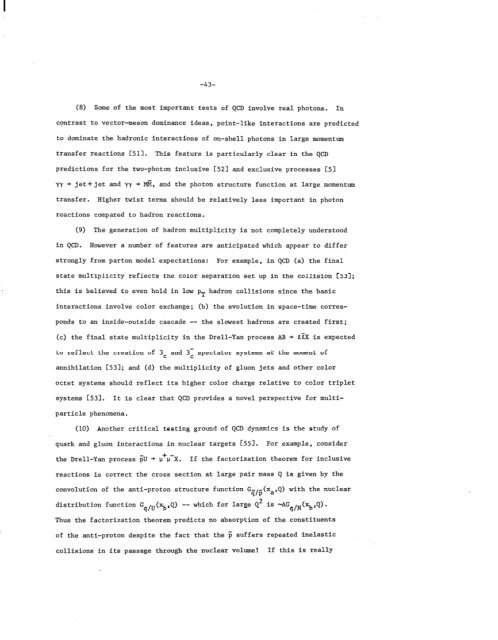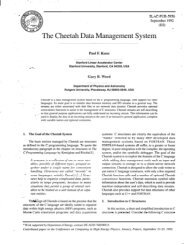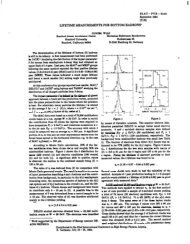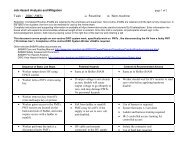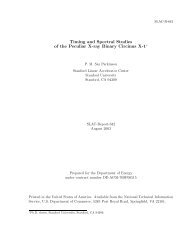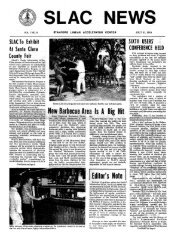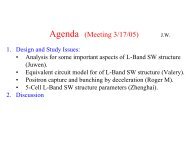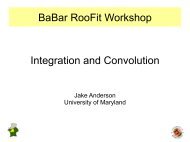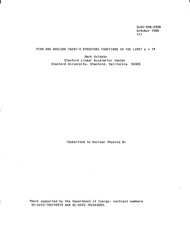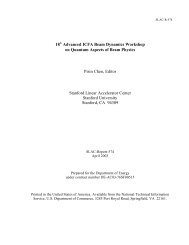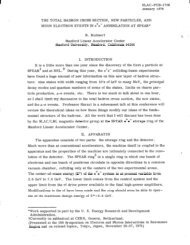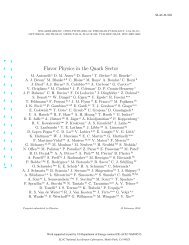slac-pub-2605 - SLAC - Stanford University
slac-pub-2605 - SLAC - Stanford University
slac-pub-2605 - SLAC - Stanford University
Create successful ePaper yourself
Turn your PDF publications into a flip-book with our unique Google optimized e-Paper software.
-43-<br />
(8) Some of the most important tests of QCD involve real photons. In<br />
contrast to vector-meson dominance ideas , point-like interactions are predicted<br />
to dominate the hadronic interactions of on-shell photons in large momenta<br />
transfer reactions C511. This feature is particularly clear in the QCD<br />
predictions for the two-photon inclusive [52] and exclusive processes [5]<br />
yy + jet+jet and yy + 6, and the photon structure function at large momentum<br />
transfer. Higher twist terms should be relatively less important in photon<br />
reactions compared to hadron reactions.<br />
(9) The generation of hadron multiplicity is not completely understood<br />
in QCD. However a number of features are anticipated which appear to differ<br />
strongly from parton model expectations: For example, in QCD (a) the final<br />
state multiplicity reflects the color separation set up in the collision [53];<br />
this is believed to even hold in low pT hadron collisions since the basic<br />
interactions involve color exchange; (b) the evolution in space-time corres-<br />
ponds to an inside-outside cascade -- the slowest hadrons are created first;<br />
(c) the final state multiplicity in the Drell-Yan process AB -+ !LzX is expected<br />
to reflect the creation of 3c and 3: spectator systems at the moment of<br />
annihilation C531; and (d) the multiplicity of gluon jets and other color<br />
octet systems should reflect its higher color charge relative to color triplet<br />
systems C531. It is clear that QCD provides a novel perspective for multi-<br />
particle phenomena.<br />
(10) Another critical testing ground of QCD dynamics is the study of<br />
quark and gluon interactions in nuclear targets c551. For example, consider<br />
the Drell-Yan process pU + u+u-X. If the factorization theorem for inclusive<br />
reactions is correct the cross section at large pair mass Q is given by the<br />
convolution of the anti-proton structure function G- -(x ,Q) with the nuclear<br />
qlp a<br />
distribution function G q/U%‘Q) -- which for large Q2 is -AGqjN$ ,Q) .<br />
Thus the factorization theorem predicts no absorption of the constituents<br />
of the anti-proton despite the fact that the F suffers repeated inelastic<br />
collisions in its passage through the nuclear volume! If this is really


